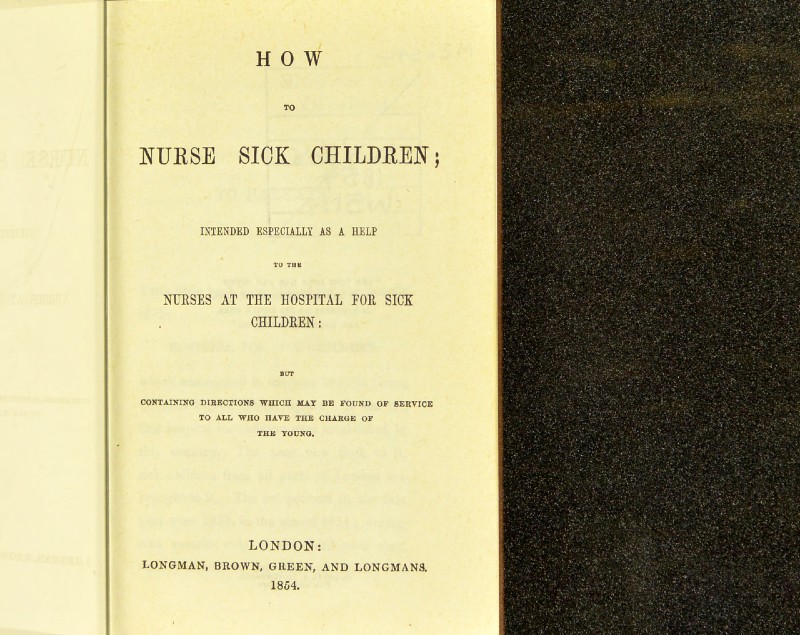
This small 79-page book How to Nurse Sick Children was published in 1854 and written by Dr. Charles West to benefit the Great Ormond Street Hospital (GOSH), which he had founded 3 years earlier, the 1st UK hospital for sick children. This book provides particularly interesting insights into 19th century children's nursing showing how the cost of care and the role of nurses were key issues long before the NHS existed.
The book starts with an impactful section aimed at parents. Dr. West talks about the hospital’s increasing work with outpatient numbers rising from 1252 in 1851 to well over 5000 two years later. He notes, that whilst 21,000 children under the age of 10 died in London annually, GOSH only had 30 beds. He then writes about the impact of a sick child ‘weigh[ing] down the whole family, keeping the father poor and the home wretched’. He goes on to plead ‘do not let this Hospital fail for want of funds’ and appeals to readers ‘to give what best you can contribute’ to support the hospital’s work and provides details on how to donate.
The book’s second section is dedicated to nurses and, amongst other things, outlines the attributes and duties of a children’s nurse. The text clearly emphasises children’s nursing as a religious vocation for women. This likely reflects Florence Nightingale’s early impact around the time this book was published. As to be expected of a book written in the 1850s by a male doctor for female nurses, the text tells us much about medical/nursing dynamics and the professional hierarchy at the time. For example, Dr. West reminds nurse readers not to forget their proper place or to interfere with the doctor’s duties. A further reminder tells all nurses that even the youngest doctor must have a great deal more knowledge ... than almost any nurse can have.
This book’s text clearly intends to keep GOSH nurses in their subservient place! Dr West is writing about nursing in his hospital but his words give insight into how the medical profession more widely viewed hospital nursing and illustrates the power of doctors to influence the development of nursing and create a culture where female nursing knowledge was regarded as well below that of male doctors.
For those wanting to read more about 19th century children’s nursing, How to Nurse Sick Children is freely accessible online. The RCN free exhibition on Children’s Nursing Once Upon a Time can be viewed at the RCN Scotland Learning Hub, South Oswald Road, Edinburgh (Monday-Thursday 10am-4pm) until Thursday 24th October.







 Share on LinkedIn
Share on LinkedIn




